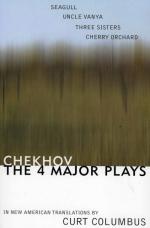|
This section contains 5,981 words (approx. 20 pages at 300 words per page) |

|
SOURCE: Scott, Virginia. “Life in Art: A Reading of The Seagull.” Educational Theatre Journal 30 (October 1978): 357-67.
In the following essay, Scott highlights Chekhov's theme of the artist's life as expounded in The Seagull.
In 1898 the Moscow Art Theatre, led by Constantin Stanislavsky and Vladimir Nemirovich-Danchenko, opened its triumphal production of Anton Chekhov's The Seagull, a production which Chekhov himself disliked intensely. During his stay in Moscow in 1899, the MAT arranged a special performance for him of which he wrote: “I cannot judge the play dispassionately, because the Seagull [Roxanova] gave an abominable performance, kept sobbing violently; and the actor playing the part of the writer Trigorin [Stanislavsky] walked and talked like a paralytic. He interpreted his part to be that of a man without a ‘will of his own’ and in a way that absolutely nauseated me.”1
I infer that the acting choices which nauseated Chekhov arose from...
|
This section contains 5,981 words (approx. 20 pages at 300 words per page) |

|


